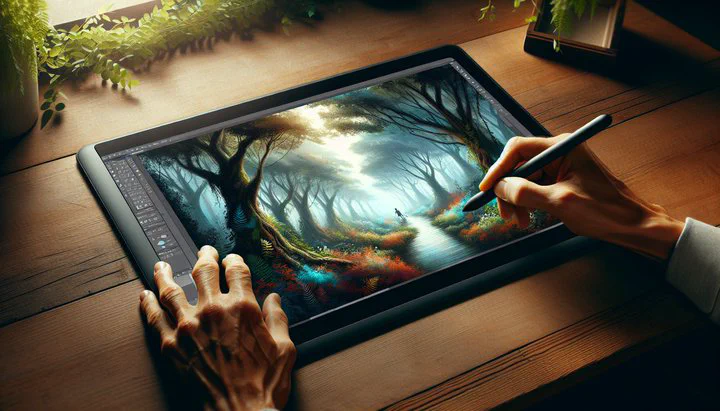Best Brushes for Textured Illustrations in Photoshop

Understanding Textured Brushes
When you’re diving into digital art, one exciting tool you have is the textured brush. Textured brushes are special tools that add depth and interest to your art with just a few strokes. But what exactly are textured brushes, and why are they important in digital art? They have unique surface patterns that mimic traditional art tools like charcoal or watercolor. These brushes help make your digital illustrations look lively and interesting.
In Photoshop, there are many textured brushes to choose from. Here are some types and their uses:
- Chalk Brushes: Great for rough, gritty textures.
- Watercolor Brushes: Perfect for soft, flowing effects.
- Oil Brushes: Ideal for rich, bold strokes.
Using brushes for textured illustrations in Photoshop is about adding dimension to your work. Imagine creating a landscape with trees you can almost feel or a portrait with hair that flows naturally. Textured brushes let you build layers of detail, turning a flat image into something dynamic and engaging. They are essential tools for any artist looking to enhance their illustrations with texture and depth. So explore the world of textured brushes and watch your illustrations transform!
Using Smudge Brushes Effectively
In digital painting, a good smudge brush is like a secret weapon. It helps you blend colors smoothly, creating transitions that make an illustration feel alive. But what is a smudge brush, and how do you use it effectively?
In Photoshop, a smudge brush works like a finger, blending colors smoothly on your screen. To use a smudge brush effectively, follow these steps:
- Choose the Right Brush: Look for a soft-edged brush with some texture.
- Blend Colors: Lightly drag the brush over two colors to create a smooth gradient.
- Add Textures: Use the smudge brush to add subtle textures over it, enhancing the traditional feel.
For example, if you’re painting a portrait, use the smudge brush to smoothly blend shades on the skin, making it look realistic. This technique is useful for achieving soft backgrounds or realistic textures.
Incorporating smudge brushes into your workflow can improve the quality of your illustrations. They allow you to blend shades effortlessly, making colors transition naturally. This enhances the realism and adds depth to your artwork. So, try different smudge brushes and techniques in Photoshop. With practice, you’ll create stunning, textured illustrations that captivate and inspire.
Techniques for Traditionally Shaded Illustrations
Creating traditionally shaded illustrations with digital tools can be rewarding. It brings the charm and depth of traditional art into your digital projects. How do you achieve this in Photoshop? It starts with understanding layers and textures.
Traditional shading uses techniques like cross-hatching to add depth. In Photoshop, you can use layers of textures to mimic traditional shading, like cross-hatching. Start with a base color, then layer different textures, like watercolor or charcoal, using textured brushes. This layering adds complexity and life to your illustration.
To blend shades, use a smudge brush. Gently drag a good smudge brush over color edges to create smooth transitions, just like traditional art. This technique is great for skin tones, shadows, and soft backgrounds.
You can also play with opacity and blending modes. Lowering opacity can help achieve subtle shading effects. Blending modes like “Multiply” or “Overlay” add depth, making illustrations pop. Experiment with these settings to create layered effects that mimic pencil or ink shading.
By combining these techniques, your digital illustrations will feel crafted with traditional tools. Whether layering textures over it or using a smudge brush to blend shades, these strategies help you achieve the timeless appeal of traditionally shaded illustrations. Dive into Photoshop, try these methods, and watch your digital art take on a new, textured life.
Final Thoughts
Now that you know how to use brushes for textured illustrations in Photoshop, it’s time to experiment! Try these techniques and share your creations with the community. This is a great way to learn and grow as an artist. Check out related tutorials and resources on DesignResolve to enhance your skills further. Happy creating!